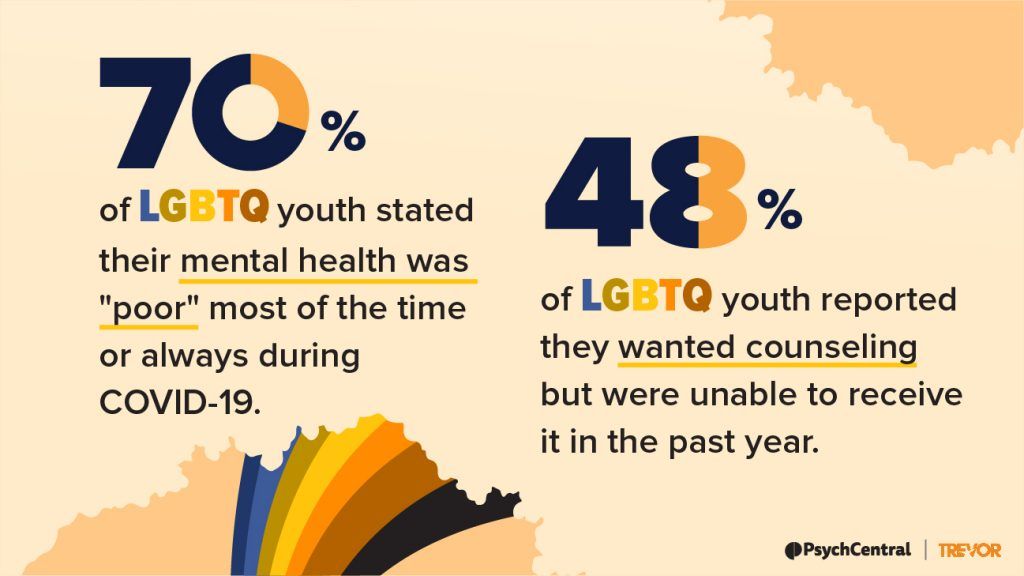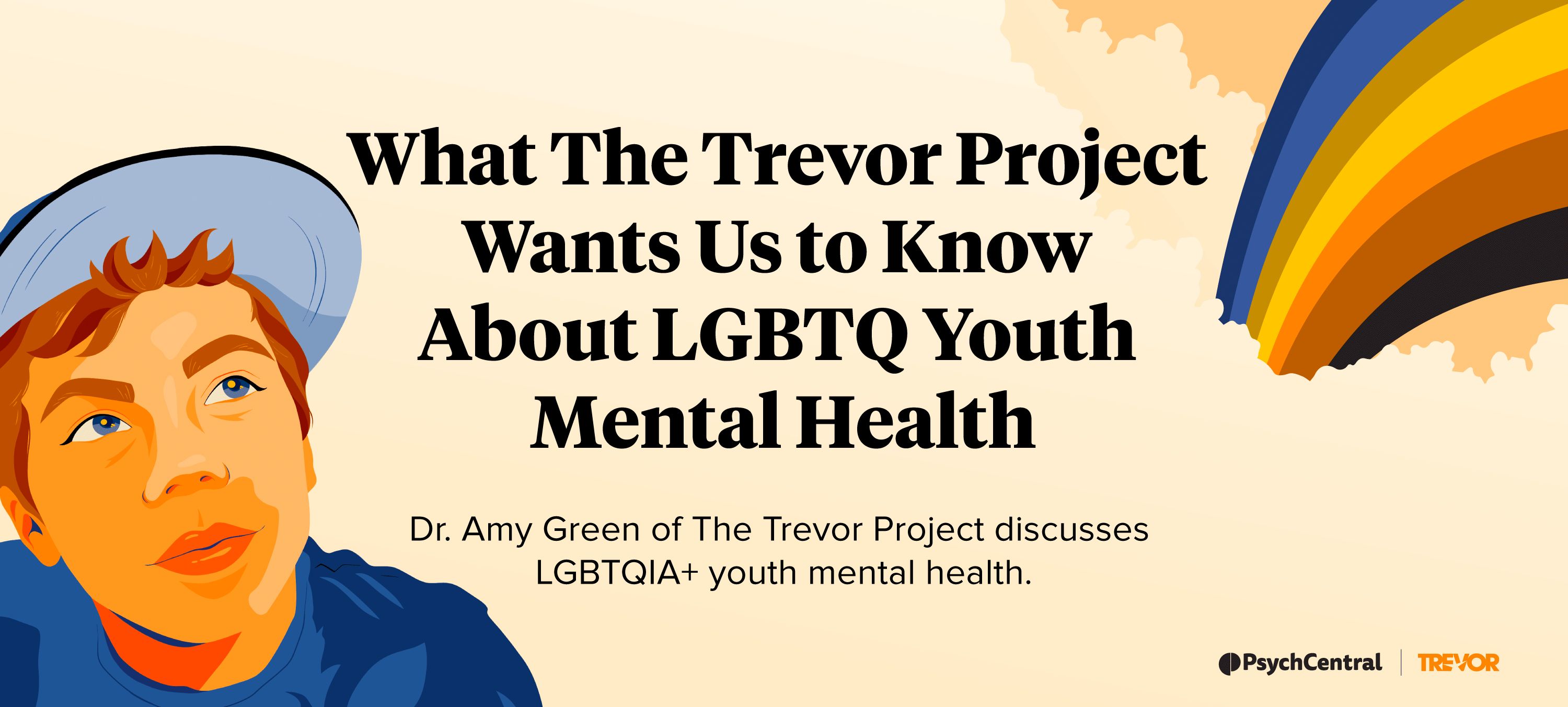Since 1999, June has been called Pride Month, set aside to celebrate and honor the experiences of the LGBTQ community.
That’s originally what led me to seek out a guest to discuss LGBTQ issues for the “Inside Mental Health” podcast. I wanted to do something involving the experiences of LGBTQ people and mental health during Pride Month.
As a cisgender male, I knew I needed someone other than myself — and that led me to Dr. Amy Green at The Trevor Project.
The Trevor Project is the world’s largest suicide prevention and crisis intervention organization for LGBTQ young people. Green is the vice president of research and leads the Annual National Survey on LGBTQ Youth Mental Health.

LGBTQ+ youth and suicide risk
As a mental health advocate, I’m aware that suicide isn’t only a big issue among our youth, but sadly, an often overlooked one.
“Let’s go to high school youth — for example, those who aren’t LGBTQ. About 5% of them attempt suicide in any given year,” Green says. That’s already a very high number. But then, “when we get to the LGBTQ youth, that number gets up above 20%.”
For me, it was a jaw-dropping number — 1 out of every 5 LGBTQ youth (13 to 17 years old) attempt suicide.
In my shock, I blurted out, “Why are LGBTQ youth at a higher risk for suicide?” The shock in my voice was so evident that I had to rerecord the question in postproduction to ensure listeners could understand it.
Green explains that there’s nothing inherent about being LGBTQ that raises their risk. The rise in suicidality is solely the blame of society.
“Unfortunately, it’s the way LGBTQ youth and LGBTQ people in general are treated by those who are close to them, like rejection from friends and family and other important people in their lives,” she says.
Green also pointed out that the effects of the hostility on a societal and political level add up, especially for a young person who’s still trying to find their place in the world.
Key findings from the National Survey on LGBTQ Youth Mental Health
Since the podcast isn’t long enough to discuss the entire 2021 survey, I asked Green to give us the key findings.
Before diving in, she gave us a little background on how the survey was conducted. Nearly 35,000 young people were surveyed, with the majority of them between ages 13 and 24.
“This is our third year doing [the survey],” Green says. “We’re not seeing large overall changes in terms of the percentage of LGBTQ youth who said they seriously considered suicide or attempted suicide in the past year. It was about 42% this year for those who seriously considered in the past 12 months, and our past years, it’s been around 40.”
“In terms of suicide attempts, our overall rates in the past couple of years have always been somewhere around 14 to 15%,” she adds. “So, seeing some stability there.”
This year, the survey was segmented not just by sexual orientation, gender identity, and age, but also between LGBTQ identities and youth race and ethnicity.
“That’s where some of the findings really start to look starker,” Green says.
She says that while, overall, 14% of youth attempted suicide in the past year, that figure was 12% for white youth. But for LGBTQ youth of color, the numbers took a sharp increase.
Green explains the survey results were:
- 31% for native indigenous youth
- 21% for Black youth
- 21% for youth who had more than one race or ethnicity
- 18% for Latinx youth
- 12% for Asian and Pacific Islander youth
If we take an overall look, it appears the suicide rate hasn’t significantly changed from 2020 to 2021.
However, when the numbers are broken down by race, a different picture emerges.
“We see that there are youth who are struggling more, and that really in our work ends up being LGBTQ youth of color and LGBTQ youth who are transgender and nonbinary,” Green says.
Hope in the LGTBQ+ community
For me, it was impossible not to be impacted by this information. One suicide in any community is too many — but to hear about so many at-risk youths making an attempt, and knowing how preventable this is, made me an odd mixture of sad and angry.
The reason The Trevor Project conducts the annual survey isn’t to put the negatives on display, but to use the information to improve the lives of LGBTQ young people. So I asked Green if the survey generated any hope.
She says the survey proves that visibility and acceptance lower the risk of suicide. Simple things like seeing rainbow flags, celebrities who are out with pride, and having schools that support them are all positive forward steps.
“If the social context is one of the biggest sources of risk for LGBTQ youth,” Green says, “then the social context is something that we can change. And by having more positivity around, that’s something that can help them actually feel better.”
What can society do?
Green let me know one of the questions on the survey has to do with whether or not recent politics negatively impacted mental health.
“We had our highest number this year, unfortunately,” Green says. “Ninety-four percent of LGBTQ youth who said that recent politics had negatively impacted their mental health or sense of self and well-being.”
Green explains that the biggest thing we can do is counter that message. Be vocal to drown out the constant negativity.
“Whether it’s in person or it’s on our social media accounts, LGBTQ youth are listening, and they’re looking for messages of support and care,” Green says.
You can listen to the full interview with Dr. Green by clicking the player below or visiting the official episode page.
Gabe Howard is an award-winning writer and speaker who lives with bipolar disorder. He’s the author of the popular book, “Mental Illness Is an Asshole and Other Observations,” available from Amazon; signed copies are also available directly from the author. Gabe is the host of Healthline Media’s weekly podcast, “Inside Mental Health.” You can listen and learn more here. Gabe can be found online at gabehoward.com.
